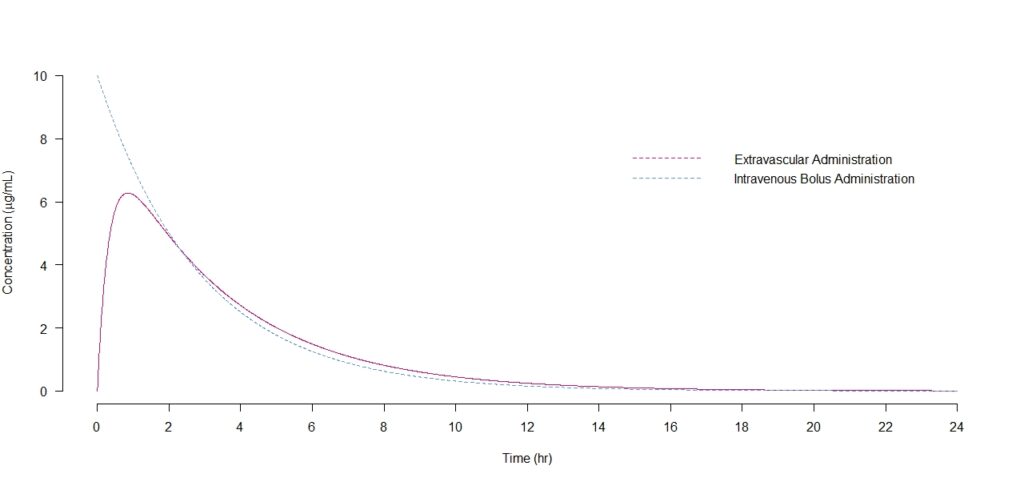Pharmacokinetics of Different Administration Routes
Drugs can be administered by many different routes, with the most common being oral administration of drugs either as tablets, capsules or liquids. Other routes of administration include intravenous, subcutaneous, intramuscular, topical, inhalation, buccal, sublingual, intrathecal etc. Despite many routes of administration, we can generally divide them up into intravascular or extravascular.
For drugs administered by the extravascular route, they first need to be absorbed from the site of delivery, whether that be the gastrointestinal tract following oral dosing, absorption through the skin after a topical administration, etc.

In the concentration vs time figure above, following extravascular administration drug is released from it’s formulation and absorbed into the systemic circulation. During the absorption phase, the amount of drug being absorbed is greater than that being eliminated. Therefore concentration increases until the amount of drug being absorbed is equal to that being eliminated. At this point, we have reached the maximal concentration. After this point in time, the rate of drug being eliminated is faster than than absorption and the concentration declines over time. For intravenous doses that are administered as a bolus, meaning that they are administered immediately in a single “push”, the maximal concentration occurs as soon as the drug is administered since the absorption step does not need to occur. In practice we often cannot measure drug concentration in plasma of a subject instantly after the IV bolus is administered but we are able to mathematically calculate what the theoretical concentration at the time of the bolus would be.
The types of concentration vs time profiles that we see following intravenous compared to extravascular dosing are markedly different.
- Following intravenous dosing bioavailability is 100%, however following extravascular administration can be impacted by the absorption process.
- Following IV bolus maximal observed concentrations are usually higher than extravascular dosing.
- For drugs that exhibit very slow absorption, the elimination phase following extravascular administration may likely reflect the rate of absorption rather than the terminal elimination rate. This is refered to as “flip-flop” kinetics and results in different half-lives between IV and extravascular dosing.
Our experts have over 77 years combined expertise in pharmacokinetics, if you have any questions related to a on-going program please contact us.




